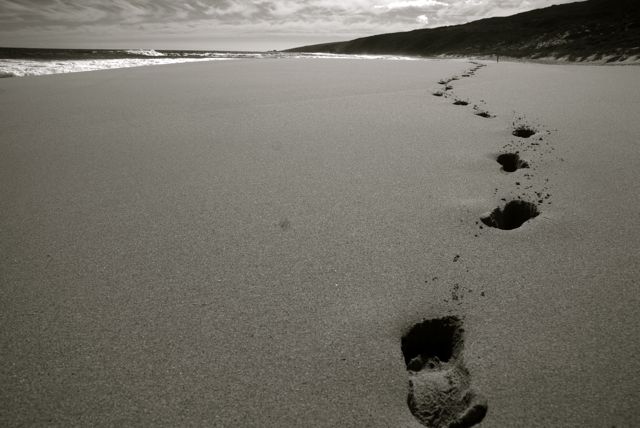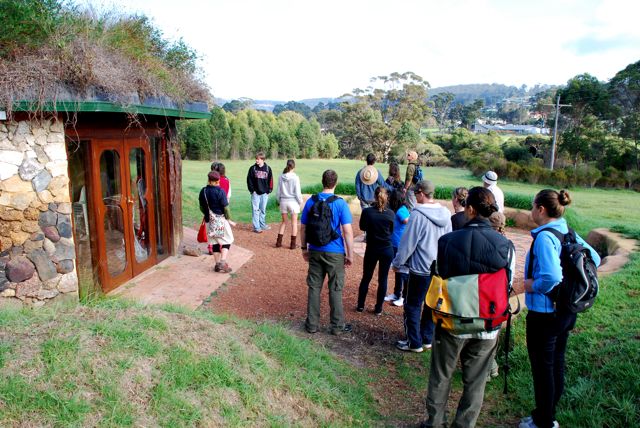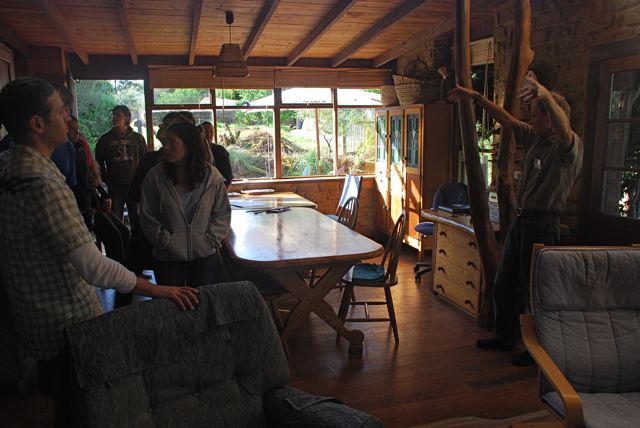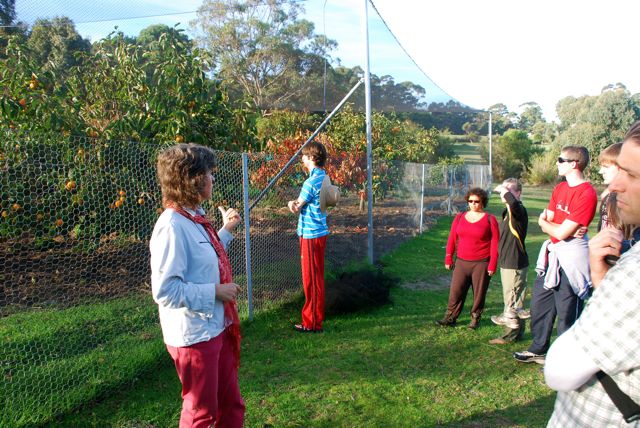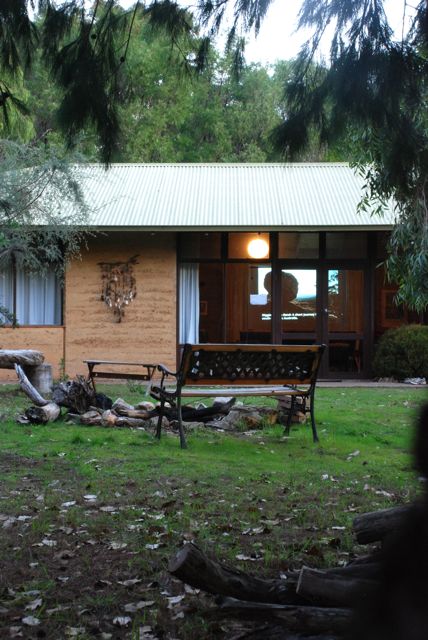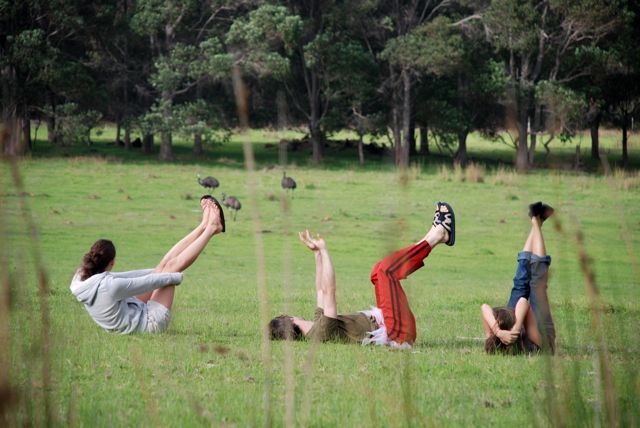Last weekend I gave my environmental history presentation to a group of Notre Dame sustainability students on the south coast of WA. I took a few friends with me for the ride, and along with a large dome tent and some red wine, we wound our way south. Upon arriving in Denmark we rendezvoused with the others at the Centre for Sustainable Living.
Part of the centre, ‘The Sanctuary’ is a small circular building with a living roof. We walked to the entrance of the Sanctuary and looked, over the grass and over the river, out on Denmark in the still and cool autumn morning. With the mosaic of trees and river and hills and grass it was a heart-lifting scene. Talking with Louise Duxbury inside the centre she reminded us of some of the history of the town, including the wave of hippies who came to live in the town in the 1970s. Such folk included my parents, and soon enough myself as a small baby back in 1978. I knew the man who had made the mosaic tiles for the Sanctuary and the man who had made the stained glass. It was a good feeling to be enmeshed back amongst some of my Denmark roots.
And so to the location of my talk later that day: the Wolery. The Wolery is an eco-village on 64 hectares close to the town of Denmark.
In this photograph John Piercy is showing us about passive solar design, his profession, with a tour through his own home at the Wolery. The place felt light and open and good to be in. In fact it was an inspiring house to be inside. At the end of his talk I asked him how much it had cost him to build it. He told me that if you discounted labour, of which he’s supplied all of it, then it had cost four thousand dollars. Inspiring indeed.
Here Louise Duxbury shows us her orchard, next to her house at the Wolery. Those are many, many persimmons that you can see hanging on the tree behind her. Louise also showed us around her large vegetable patch. Afterwards I asked her if she would be able to manage to live on only her own produce for a year. She said she could.
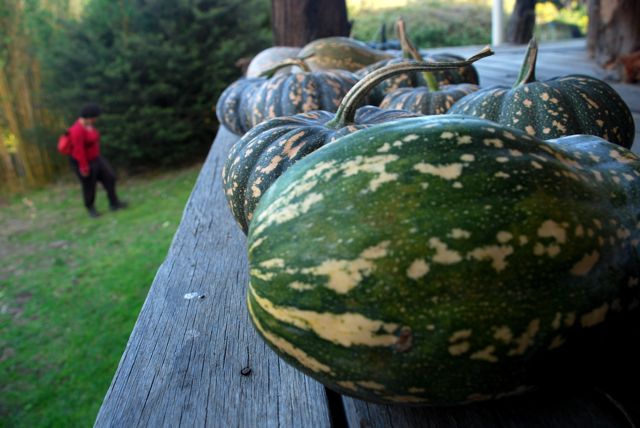 These are some of her pumpkins, sitting pretty for a meal some time in the future. With peak oil and peak phosphorus causing global food scarcity around 2030, it is the kind of thing I’d like to see sitting on my veranda.
These are some of her pumpkins, sitting pretty for a meal some time in the future. With peak oil and peak phosphorus causing global food scarcity around 2030, it is the kind of thing I’d like to see sitting on my veranda.
I will have excerpts from a couple of interviews I did at the Wolery on the radio 11.30am, 26 May – on Understorey, RTR 92.1FM in Perth.
That’s the community centre at the Wolery, with my powerpoint presentation Digging in the Sand set up and ready to go. Thanks for having us to all at the Wolery. It was a pleasure to walk around the quiet, bird-frequented property, with its mud brick and wooden houses nestled amongst orchards and gardens. This place used to just be a big paddock, and in three decades it has gone on to become a centre for sustainable, and enjoyable, living.
Oh yeah… I mentioned that I took a few friends along with me for the ride down to Denmark. One was from Canada, one from Germany and one from France. At one point we passed some emus in a field. I told them that emus were particularly curious birds, and that if they wanted the emus to come close to them then they might do something bizarre in the middle of the field, like like lying on their backs with the hands and legs in the air. Then hopefully the curiosity of these enormous birds would be piqued and they would approach the group. Luckily everybody believed me. I don’t know about my integrity or credibility as a tour guide, but the photo will live on.
